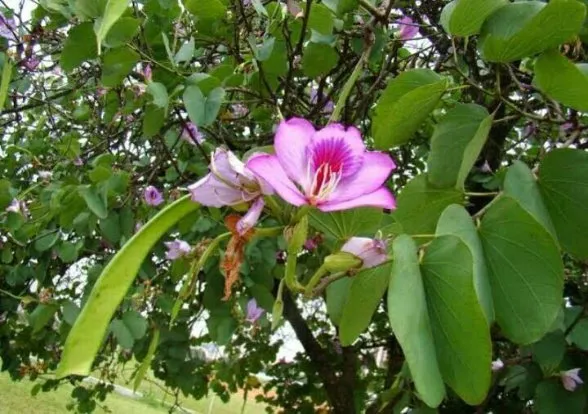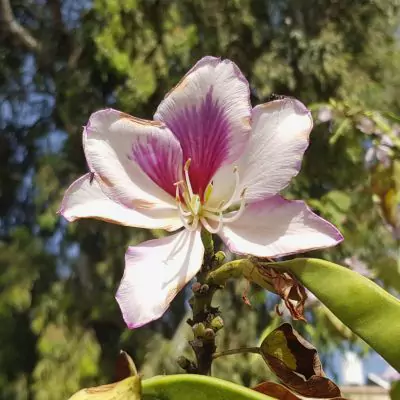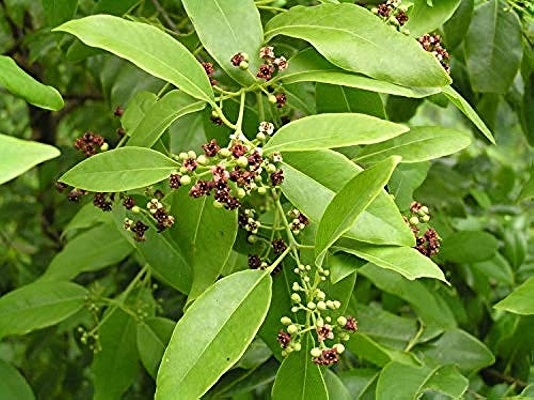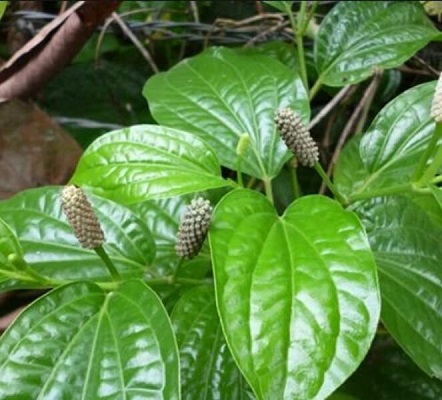On This Page
Introduction
Kachnar, commonly known as Camel’s foot, is a small tree found throughout India. The name Kachnar indicates that the flowers of the plant is golden yellow in color. Kachnar also known as Mountain ebony due to it’s abundance in hilly areas. The species name ‘variegata’ means that the plant is variegated with patches of different colors. Kachnar is one of the most commonly used herb in Ayurveda.
Dr. Gupta’s IAFA conducted various studies in Kachnar to find out the therapeutic actions of the herb. Our experts have successfully proven the activities like Anti-inflammatory , Anthelmintic, Haemostatic, Antimitotic, Antitumor, Antioxidant, Rejuvenative and Antiallergic property of Kachnar. The ethanolic extract of Kachnar showed nephroprotective activities on researches. The aqueous extract of the plant have antioxidant and antihyperlipidemic activities. Our experts are also conducting experimental studies to prove the hepatoprotective activity of the plant and found positive results.
Action of Kachnar – Bauhinia variegata in Allergies
IAFA experts are putting continuous efforts to prove the antiallergic property of Kachnar. The plant contains phytoconstituents like hentriacontane, octacosanol, sitosterol and stigmasterol which aids in the antiallergic property of the plant. The paste prepared from the bark of Kachnar can be used effectively in skin allergic conditions caused by aggravation of Kapha and Pitta doshas.
Vernacular Names
| Sanskrit Name | Kanchanara |
| Hindi Name | Kachnar, Kanchanar, Kanchnar |
| English Name | Camel’s foot |
| Malayalam Name | Mandharam |
| Kannada Name | Kempumandara |
| Marathi Name | Raktakanchan |
Botanical Name
Bauhinia variegata
Family
Caesalpinaceae
Morphology of Kachnar – Bauhinia variegata
- Small sized tree
- Stem is woody, erect
- Leaves are alternate, long and hairy
- Inflorescence is panicle cyme
- Flowers are pink colored
- Fruits are legume or pods
Ayurveda Reference of Kachnar – Bauhinia variegate
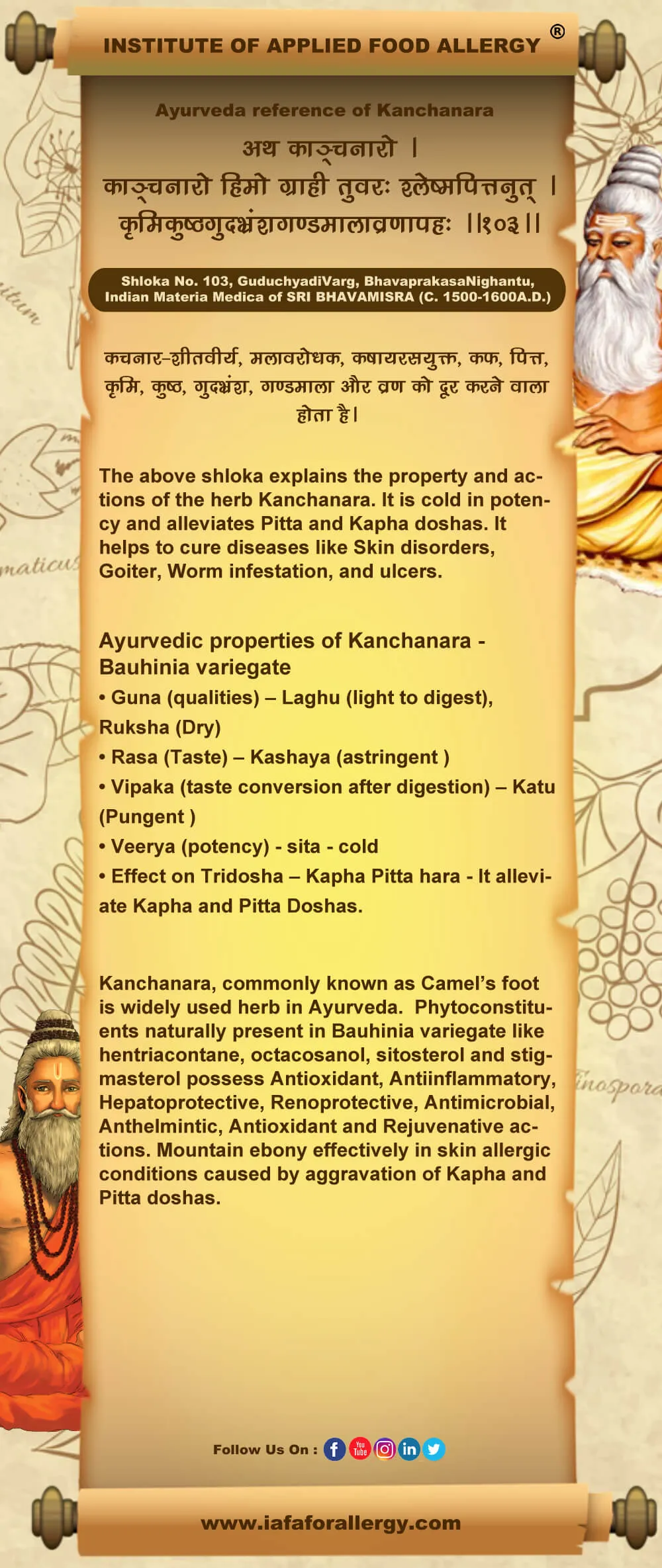
Geographical Distribution of Kachnar – Bauhinia variegata
Found throughout India commonly in road sides. Due to it’s beautiful flowers, it is cultivated in gardens.
Phytoconstituents of Kachnar – Bauhinia variegata
The plant contains phytoconstituents like hentriacontane, octacosanol, sitosterol and stigmasterol etc.
Parts Used of Kachnar – Bauhinia variegata
- Stem bark
Dosage of Kachnar – Bauhinia variegata
- Powder (churna) – 3-5 g
- Decoction (Kwatha)- 40-80 ml
Medicinal Properties of Kachnar – Bauhinia variegata
- Kushtaghna – relieves skin disorders
- Sophahara – relieves swelling
- Swasahara – relieves asthma
- Rasayana – rejuvenative
- Krimighna – useful in worm infestations
- Kandughna- relieves itching
- Vishaghna – useful in poisoning
- Vranahara – useful in wounds
- Kasahara – relieves cough

Have A Health Issue?
Consult Online
- Dr. Sahil Gupta (B.A.M.S., M.H.A.)
Ayurvedic Allergy Specialist
CEO & Founder of IAFA®
Home Remedies of Kachnar – Bauhinia variegata
From ancient times itself Ayurveda is widely used in India. Kachnar is readily available herb. Due to its high medicinal value it is used in treating many diseases like,
- In Goitre (Gandamala) – Decoction is prepared with Kachnar and Zingiber officinale powder. It is then taken at a dose of 60 ml twice per day.
- In Pox (Masurika) – Decoction prepared from the bark of Kachnar added with copper pyrite powder and taken orally.
- In Cough (Kasa) – Freshly collected bark of Kachnar is made in to decoction by adding 4 times water. It is then orally.
- In Skin disorder (Kushta) – The stem bark of Kachnar is dried and powdered well. It is then mixed with ghee and applied over skin.
- In Worm infestation (Krimiroga) -Decoction made with stem barks of Kachnar is taken internally at a dose of 60 ml.
- In Skin ulcers (Vrana hara) – Paste prepared from stem bark is mixed with honey and applied over the skin.
- As a Carminative (Deepana) – Drinking solution prepared by adding stem bark of Kachnar in water can act as carminative.
- In Fever (Jwara) – Decoction made with stem bark of Kachnar can cure Fever.
Ayurveda is not only a medicinal system but also a lifestyle. The medicines which are mentioned in Ayurveda are found naturally and are devoid of any toxic effects. Dr. Gupta’s IAFA have been conducting research studies to find out different combinations of herbs for the alleviation of many diseases especially allergic conditions. IAFA follows strict guidelines to ensure the safety of our consumers and purely based on methods mentioned in Ayurvedic text books.
Reach IAFA for safe herbal remedies for all your ailments!!!
Was this Page Helpful?
Read More Articles
-
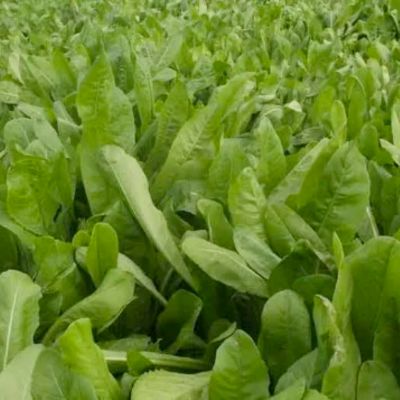
Kasini (Cichorium intybus)
Kasini (Cichorium intybus) commonly known as Chicory is a perennial herb, with large…
-
-

